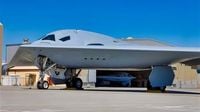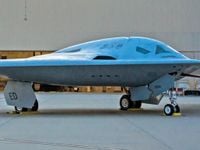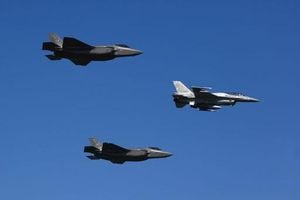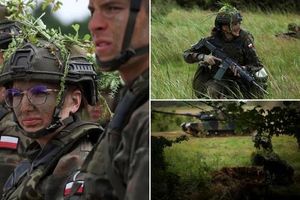The U.S. Air Force’s cutting-edge B-21 Raider stealth bomber program has hit a major milestone, as a second test aircraft took to the skies in California this September. The addition of this second flying prototype is more than just a new chapter in America’s long-range strike story—it’s a sign that the Pentagon’s most closely watched aviation project in decades is picking up speed, with big implications for U.S. military power and the defense industry alike.
According to the U.S. Air Force announcement on September 11, 2025, the second B-21 Raider completed its inaugural flight at Edwards Air Force Base, a site that has long been the nerve center for Air Force test and evaluation. This new aircraft joins its sibling at the 420th Flight Test Squadron, forming the backbone of the B-21 Combined Test Force. "With the arrival of the second B-21 Raider, our flight test campaign gains substantial momentum," Air Force Secretary Troy Meink stated, underscoring the significance of this event. Meink explained that the expanded test fleet enables the integration of weapons and mission systems—a step beyond the initial performance checks that have characterized early flights.
It’s not just about getting planes in the air. Edwards Air Force Base itself underwent significant expansion in the late 2010s to prepare for the Raider program, reflecting the scale and ambition of the project. Alongside the two flying test aircraft, at least two non-flying B-21 airframes are being used for ongoing evaluation, while four additional pre-production bombers are in various stages of construction at Northrop Grumman’s Plant 42 facility. As of January 2025, Northrop Grumman had secured two contracts for low-rate initial production of more B-21 Raiders, signaling the Air Force’s intent to move swiftly from prototype to operational fleet.
The B-21 Raider has been billed as the world’s first sixth-generation aircraft, and it’s designed to carry both nuclear and conventional weapons. Its stealthy flying-wing design—on display since its public unveiling at Northrop Grumman’s Palmdale, California factory in December 2022—evokes its predecessor, the B-2 Spirit, but with updated materials, engineering, and a whole new approach to adaptability. The B-21’s stealth features are intended to let it slip deep into enemy territory, evading the increasingly sophisticated air defenses of adversaries like China and Russia.
What sets the B-21 apart isn’t just its ability to fly unseen. It’s the way it’s built. The Raider uses an open, modular architecture, which means that new technologies, sensors, weapons, and even computing systems can be added or swapped out without the need for expensive and time-consuming re-engineering. Years ago, when the Air Force and Northrop Grumman began conceptual work on the B-21, they made modularity a top priority. As reported by the National Security Journal, "common standards, new technologies, sensors, weapons, and computing can be quickly accommodated and integrated successfully without having to ‘re-engineer’ portions of the aircraft." This approach is designed to future-proof the bomber, ensuring that it can keep pace with rapid advances in warfare technology for decades to come.
Cost control has been another defining feature of the B-21 program. The Raider’s reported unit cost is about $692 million—roughly one-third the price tag of a B-2 Spirit, which cost around $2 billion per plane. This dramatic reduction is no accident. It’s the result of meticulous planning, bulk procurement, and the efficiencies that come with building at least 100 aircraft (and likely more). According to National Security Journal, "building ‘at least 100’ aircraft (and likely more) lowers unit costs further while fielding mass for great-power conflict." The Air Force’s plan is for the B-21 to operate alongside a fleet of 76 modernized B-52 Stratofortress bombers, together forming the backbone of America’s long-range strike and nuclear deterrence capabilities well into the future.
The Pentagon has good reason to keep a close eye on costs and schedules. Past aircraft programs, such as the F-35 fighter jet and KC-46 tanker, were plagued by overruns and delays. Determined not to repeat those mistakes, Northrop Grumman and the Air Force have taken a disciplined approach to production and modernization. Northrop Grumman has even agreed to absorb some early losses to keep the program on track—an unusual but telling sign of commitment to the project’s long-term success.
But there’s more to the Raider’s story than just numbers and blueprints. Morale among those working on the program is high, with both Northrop Grumman and Pentagon officials recognizing that "mass matters"—that is, building a large number of these advanced bombers is crucial in an era when great-power competition is back on the table. The B-21 isn’t just another bomber; it’s also envisioned as a "flying command-and-control node," capable of managing onboard artificial intelligence, rapid software updates, new weapons, and even teams of drones. This adaptability could prove decisive in future conflicts, where the ability to process and act on information quickly is as important as raw firepower.
The B-21’s lineage is a storied one. It follows in the footsteps of the Cold War-era B-52 Stratofortress, the supersonic B-1 Lancer, and the radar-evading B-2 Spirit. Unlike the B-2, which was ultimately limited to a fleet of just 21 aircraft, the B-21 program aims for at least 100 planes, and possibly more if strategic needs demand. This scale not only brings down costs but ensures that the U.S. can field the kind of massed, technologically advanced formations needed for potential large-scale conflict.
Officials have kept many details about the B-21 under wraps, including its precise schedule for reaching initial operational capability. The Air Force has stated, however, that it expects the bomber to enter service in the early 2030s. Air Force Chief of Staff Gen. David Allvin put it succinctly: "The addition of a second B-21 to the flight test program accelerates the path to fielding. By having more assets in the test environment, we bring this capability to our warfighters faster, demonstrating the urgency with which we’re tackling modernization."
The B-21 program began in the early 2010s as the Long Range Strike Bomber initiative, and its importance has only grown as the strategic environment has shifted. Pentagon leaders have described the Raider as essential to maintaining U.S. military advantage, especially in the Indo-Pacific, where long distances and advanced missile threats from China pose unique challenges. Northrop Grumman’s nationwide network of suppliers supports thousands of jobs, making the Raider not just a symbol of military might but a linchpin of the American defense industrial base.
As testing ramps up and production lines hum, all eyes in Washington and beyond are watching to see whether the B-21 can deliver on its promise: a cost-effective, adaptable, and survivable bomber that will keep the U.S. ahead of its rivals for generations. The arrival of the second test aircraft is a clear sign that, for now, the Raider is flying high—both literally and figuratively.





